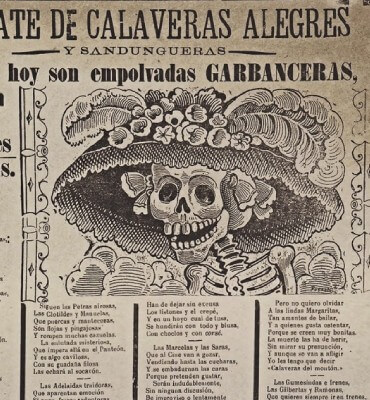
SOLARIS TIPS April 29, 2025
The Mexican Catrina, a satirical and iconic figure, has deep roots in Mexican culture. Created by Jose Guadalupe Posada, she initially mocked women who rejected their indigenous heritage for a European appearance.
She gained prominence when featured in Diego Rivera's mural 'Sueño de una tarde dominical en la Alameda Central', cementing her status as a Day of the Dead symbol. Nowadays, the Catrina is ubiquitous in the festivities, adorning altars and inspiring various artistic renditions. Her distinctive sugar skull makeup is embraced by both men and women, celebrating Mexico's rich traditions.
Jose Guadalupe Posada: Creator of the Catrina
Jose Guadalupe Posada was a visionary artist from Mexico who gave birth to the concept of the Catrina. Through his intricate illustrations and prints, Posada depicted the Catrina as a skeletal figure dressed in elegant attire. His works captured the essence of Mexican culture, embracing both life and death.
The Origins of the Mexican Catrina
La Catrina originated as a satirical figure created by Mexican artist Jose Guadalupe Posada in the early 20th century. Initially named 'La Calavera Garbancera,' Posada used his artwork to mock those who rejected their indigenous heritage in favor of European aesthetics. The Catrina symbolized the women who abandoned their roots.
Transition from Calavera Garbancera to Catrina in Mural Art
Over time, the Calavera Garbancera evolved into the Catrina we know today. The transition took place when the renowned muralist Diego Rivera featured the Catrina prominently in his mural 'Sueño de una tarde dominical en la Alameda Central.' Rivera's mural elevated the Catrina to icon status and solidified her as a central figure in Mexican culture.

Diego Rivera's Inclusion of the Catrina
Diego Rivera, a prominent Mexican muralist, recognized the cultural significance of the Catrina and decided to feature her prominently in his mural. By incorporating this satirical figure, he aimed to capture the essence of Mexican society and the complexities it faced during the early 20th century.
Symbolism in 'Sueño de una tarde dominical en la Alameda Central'
'Sueño de una tarde dominical en la Alameda Central,' or 'Dream of a Sunday Afternoon in the Alameda Central,' provides a vivid depiction of Mexican history, society, and identity. The inclusion of the Catrina symbolizes the bridging of various eras, as she stands at the center of the composition, shoulder to shoulder with Jose Guadalupe Posada and Frida Kahlo.
The mural symbolizes a fusion of different time periods, with the Catrina serving as a powerful representation of Mexico's complex past, blending indigenous roots with the influence of European culture.

Elevating the Catrina to Iconic Status
Rivera's mural catapulted the Catrina's image to widespread recognition and established her as an iconic symbol of Mexican culture. Through this masterpiece, the Catrina became inseparable from the Day of the Dead celebrations, representing the cyclical nature of life and death that Mexicans honor.
Today, the Catrina's portrayal in various artworks and public spaces pays homage to her elevated iconic status, reminding people of the rich cultural heritage and the importance of honoring traditions.
The Mexican Catrina in Day of the Dead Celebrations
The Mexican Catrina holds a central place of significance in the vibrant and colorful celebrations of the Day of the Dead in Mexico. Let's explore how this iconic figure is intertwined with the festivities.
The Catrina as a Central Symbol
The Catrina stands as a central symbol of the Day of the Dead, representing the cycle of life and death. With her elegant attire and distinctive skull makeup, she embodies the idea that death is an integral part of life, to be acknowledged and celebrated.
Catrina's Presence in Altars and Sculptures
La Catrina has also become a popular subject in art and is depicted in various forms, such as paintings, sculptures, and dolls. Artists often portray her in vibrant colors and intricate designs, reflecting the richness of Mexican culture and traditions. The figure has transcended its original meaning and has become a national symbol of Mexican identity and heritage.
During the Day of the Dead, altars are adorned with various representations of the Catrina. These can range from small figurines made of paper mache, wood, or ceramic, to larger sculptural installations. These artistic depictions serve as a reminder of the transient nature of life and the importance of honoring ancestors.
Cultural Significance of Sugar Skull Makeup
One of the most striking elements of the Catrina's appearance is the sugar skull makeup. Both men and women participate in this cultural tradition, meticulously applying intricate designs on their faces. The sugar skull makeup represents a joyful and colorful celebration of life, urging us to remember and honor loved ones who have passed away.

PREVIOUS POST NEXT POST